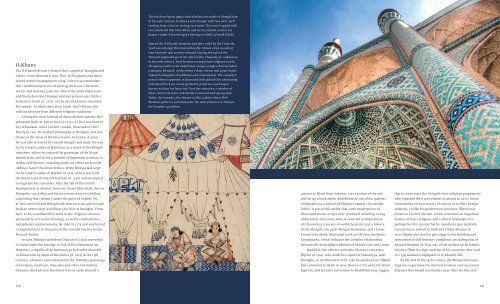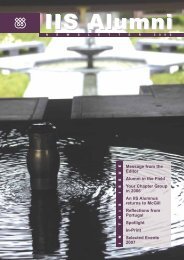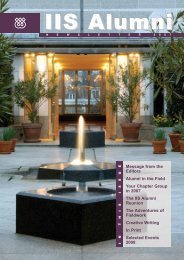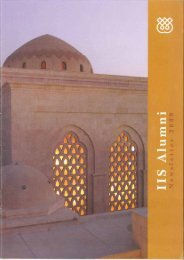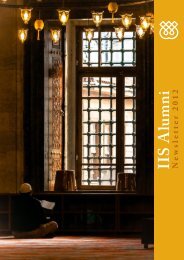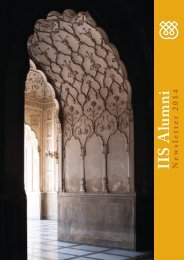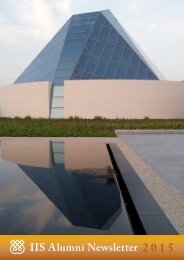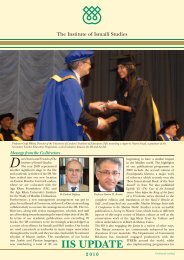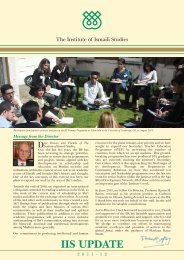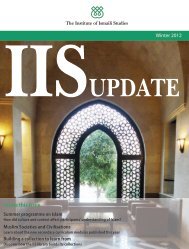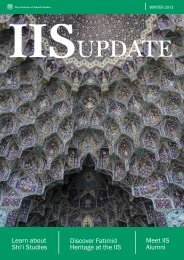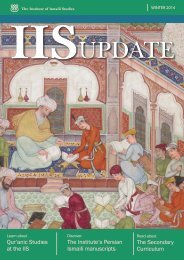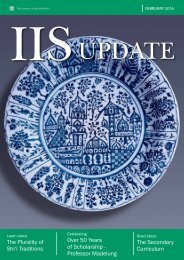IJ Mamluks and Venetians
Extract from Islam an Illustrated Journey - Mamluks and Venetians
Extract from Islam an Illustrated Journey - Mamluks and Venetians
You also want an ePaper? Increase the reach of your titles
YUMPU automatically turns print PDFs into web optimized ePapers that Google loves.
The ink drawing on paper shown below was made in Mongol Iran<br />
in the 14th century. It shows a tent mosque with two men, each<br />
reading from a Qurʾan resting on a st<strong>and</strong>. The tent is topped with<br />
two st<strong>and</strong>ards that read ‘Allah’ <strong>and</strong> an inscription on the tent<br />
drapery reads ‘All sovereignty belongs to Allah (al-mulk li’llah)’.<br />
Il-Khans<br />
The Il-Khanid dynasty located their capital at Maragha <strong>and</strong><br />
Tabriz, in northwestern Iran. They built palaces <strong>and</strong> maintained<br />
tented encampments (sing. ordu) to accommodate<br />
their traditional practice of moving their court between<br />
winter <strong>and</strong> summer pastures. One of the most impressive<br />
<strong>and</strong> finely decorated Mongol summer palaces was Takht-i<br />
Sulayman (built ca. 1275), on the site of a former Sasanian<br />
fire temple. To administer their l<strong>and</strong>s, the Il-Khans also<br />
took on advisors from different religious traditions.<br />
Among the most famous of these advisors was the Shiʿi<br />
polymath Nasir al-Din al-Tusi (d. 1274). Al-Tusi was born in<br />
Tus, Khurasan, into a Twelver (Arabic, Ithnaʿashari) Shiʿi<br />
family in 1201. He studied philosophy at Nishapur <strong>and</strong> was<br />
drawn to the ideas of Ibn Sina (Latin, Avicenna, d. 1037).<br />
He was also attracted by Ismaili thought <strong>and</strong> made his way<br />
to the Ismaili castles of Quhistan, as a result of the Mongol<br />
invasions, where he enjoyed the patronage of the Nizari<br />
Ismaili ruler <strong>and</strong> wrote a number of important treatises in<br />
Arabic <strong>and</strong> Persian, including works on ethics such as the<br />
Akhlaq-i Nasiri (Nasirean Ethics). When Hülegü laid siege<br />
to the Ismaili castles of Daylam in 1256, al-Tusi was with<br />
the Nizari Ismaili Imam Khurshah (d. 1257) <strong>and</strong> attempted<br />
to negotiate his surrender. After the fall of the Ismaili<br />
headquarters at Alamut, however, Imam Khurshah, then in<br />
Mongolia, was killed <strong>and</strong> his successors went into hiding,<br />
concealing their identity under the guise of Sufism. Yet,<br />
al-Tusi survived <strong>and</strong> Hülegü took him on as an advisor <strong>and</strong><br />
built an observatory <strong>and</strong> library for him at Maragha. From<br />
here, al-Tusi continued his work in the religious sciences,<br />
particularly on Twelver theology, as well as mathematics,<br />
metaphysics <strong>and</strong> astronomy. He died in 1274 <strong>and</strong> was buried<br />
in Baghdad next to the grave of the seventh Twelver Imam,<br />
Musa al-Kazim.<br />
In 1295, Hülegü’s gr<strong>and</strong>son Ghazan (d. 1304) converted<br />
to Islam under the tutelage of Saʿd al-Din Hammuya (or<br />
Hammuʾi, a shaykh of the Kubrawiyya Sufi order (founded<br />
in Khwarazm by Najm al-Din Kubra [d. 1221] in the 13th<br />
century). Ghazan’s conversion led to the Il-Khans’ patronage<br />
of mosques, madrasas, mausolea <strong>and</strong> other institutions.<br />
Ghazan’s chief advisor, Rashid al-Din (d. 1318), himself a<br />
Spared the Il-Khanid invasions <strong>and</strong> later ruled by the Timurids,<br />
Yazd was amongst the most culturally vibrant cities in central<br />
Iran from the 13th century onward. During the rule of the<br />
Timurid appointed governor Jalal al-Din Chaqmaq (d. unknown)<br />
in the 15th century, Yazd became an important religious centre.<br />
Chaqmaq <strong>and</strong> his wife established a large complex that included<br />
a mosque, khanqah, confectioner’s shop, cistern <strong>and</strong> qanat (water<br />
channel) alongside a bathhouse <strong>and</strong> caravanserai. The complex’s<br />
portal (shown opposite) is decorated with glazed tiles alternating<br />
with plain bricks to create geometric patterns, a technique<br />
known as banaʾi or hazar baf. Over the centuries, a number of<br />
these structures were continually renovated <strong>and</strong> repurposed.<br />
Today, the complex also houses a tekke, a place where Shiʿi<br />
Muslims gather to commemorate the martyrdom of al-Husayn,<br />
the Prophet’s gr<strong>and</strong>son.<br />
convert to Islam from Judaism, was a patron of the arts<br />
<strong>and</strong> set up a book atelier (kitabkhana) in one of the quarters<br />
of Ghazaniyya, a suburb of Ghazan’s capital city outside<br />
Tabriz. It was at this atelier that some masterpieces of<br />
illustrated manu-scripts were produced including a copy<br />
of Rashid al-Din’s own Jamiʿ al-tawarikh (Compendium<br />
of Chronicles), a survey of world dynasties <strong>and</strong> a history<br />
of the Mongols, the great Mongol Shahnama, <strong>and</strong> a lesser<br />
known translated, illustrated work on Chinese medicine,<br />
Tansuqnama, which indicates the complex relationship<br />
between the knowledge traditions of Islamic Iran <strong>and</strong> China.<br />
Rashid al-Din also served under Ghazan’s successor,<br />
Öljeitü (d. 1316), who made his capital at Sultaniyya, near<br />
Maragha, in northwestern Iran. Like his predecessor, Öljeitü<br />
had converted to Islam in 1309. However, his early Christian<br />
baptism, <strong>and</strong> his later conversion to Buddhism may suggest<br />
that in some ways the Mongols were religious pragmatists<br />
who regarded their conversions as means to curry favour<br />
from among various sectors of society or in their foreign<br />
relations. Unlike his predecessor, however, Öljeitü was<br />
drawn to Twelver Shiʿism, which remained an important<br />
feature of Iran’s religious <strong>and</strong> cultural l<strong>and</strong>scape. It is<br />
perhaps for this reason that he installed a spectacularly<br />
carved stucco mihrab in Isfahan’s Friday Mosque in<br />
1310. Öljeitü also lent his patronage to the building <strong>and</strong><br />
renovation of Sufi funerary complexes, including that of<br />
Bayazid Bastami (d. 874), one of the earliest of the Islamic<br />
mystics. Öljeitü’s reign <strong>and</strong> that of his successor Abu Saʿid<br />
(d. 1335) marked a highpoint in Il-Khanid rule.<br />
By the end of the 14th century, the Mongol khanates<br />
began to experience the internal tensions <strong>and</strong> succession<br />
disputes that would eventually cause their decline <strong>and</strong><br />
230 231


